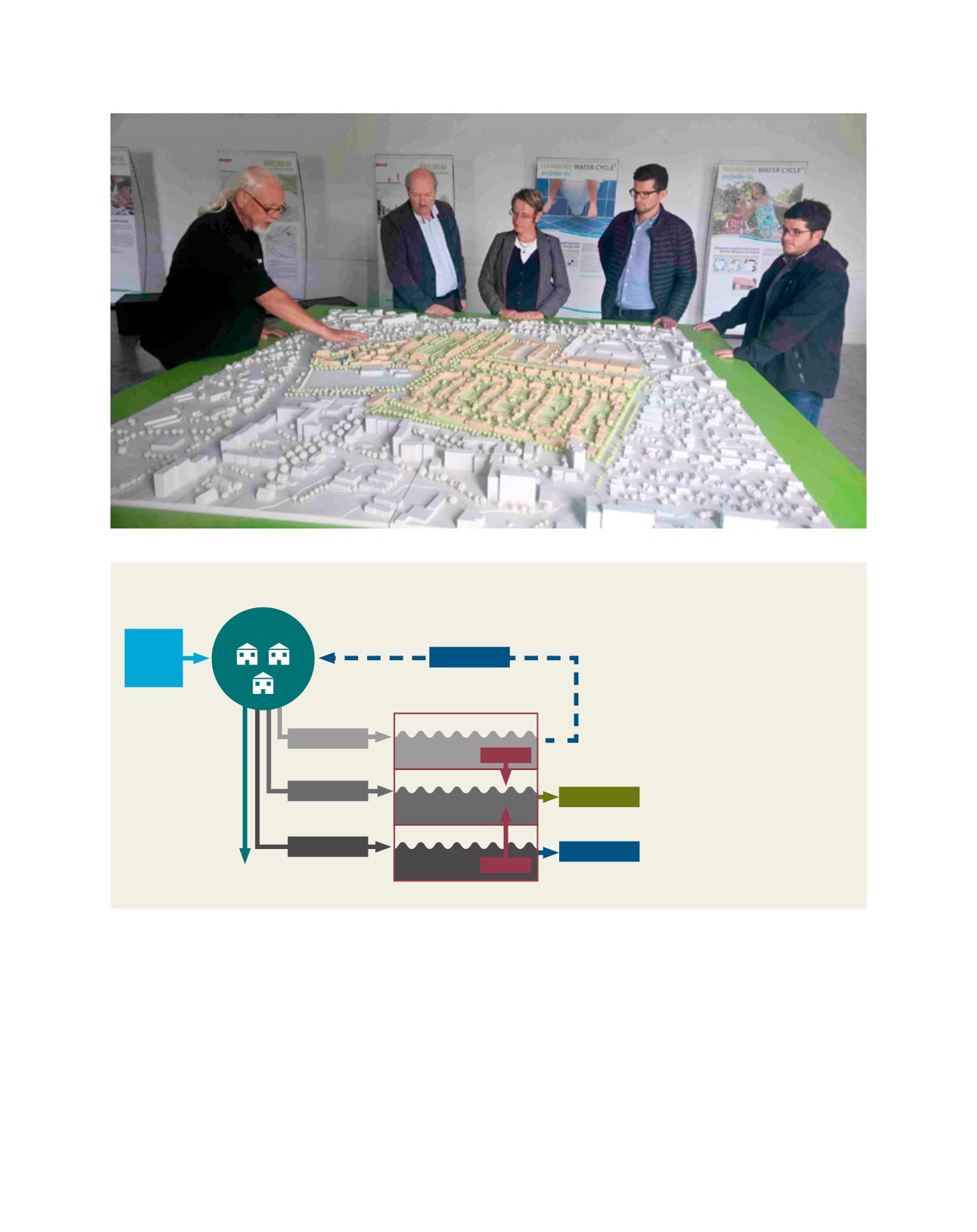

[
] 47
access
to
water
and
sanitation
for
all
Case history 2: The Hamburg Water Cycle
The innovative Hamburg Water Cycle
®
is an example of
closed-loop wastewater management, demonstrating how
wastewater can be handled in an economically and environ-
mentally responsible way by unlocking synergies between
sustainable sanitation, energy and resource efficiency. The key
elements are the separate handling of householdwater flows and
utilising their energy content locally. Europe’s largest project
showcasing the benefits of closed loop waste water manage-
ment is the newly designed Jenfelder Au quarter, a residential
area in Hamburg which has provided homes for approximately
800 families. In its use of toilets as the starting point for renew-
able energy, the project is seen by the local government as a
forward looking form of sanitation, that addresses the future
needs of the city by being reuse oriented and resource efficient.
While still in its implementation phase in Hamburg, the
Hamburg Water Cycle
24
has already positively influenced
other cities.
23
For example Cochin, India, where a concept is
being discussed that would follow the same principles. Here,
septic tanks would collect only toilet water which would be
transported to specific stations for the management of organic
material from different streams, while greywater would be
kept separate and treated in decentral facilities with options for
local reuse, for instance in improving the urban environment.
Members of the Hamburg administration and water utility discussing the Hamburg WaterCycle in front of a model of the newly designed Jenfelder Au quarter
Water from households is treated in a
nearby facility, producing service water
used for toilet flushing plus additional
service water for case-adapted needs
such as street cleaning, fire fighting,
groundwater recharge, industrial use and
others, thereby recycling up to 100%.
The resulting sewage sludge is treated
anaerobically together with biowaste
from households within the same facility,
reducing transport needs and producing
the energy required for all treatment
purposes within the facility. The waste
heat produced can be used for heating
houses. The remaining digestant can be
used as biosolids for urban greening or
for agriculture. A range of urban agencies
must cooperate to make this innovation
possible, including the urban utility for
wastewater, the stakeholder responsible
for organic waste in the city, urban
planners and the urban department for
the environment.
Figure 9: The Semizentral approach addresses water, energy and waste flows
Source: Semizentral Germany, www.semizentral.de
Image: Arne Panesar
Service water
Biosolids
Housing area
Tap water
supply
Greywater
treatment
Waste and
sludge treatment
Blackwater
treatment
Greywater
Biowaste
Recyclables
Blackwater
Service water
Sludge
Sludge
















